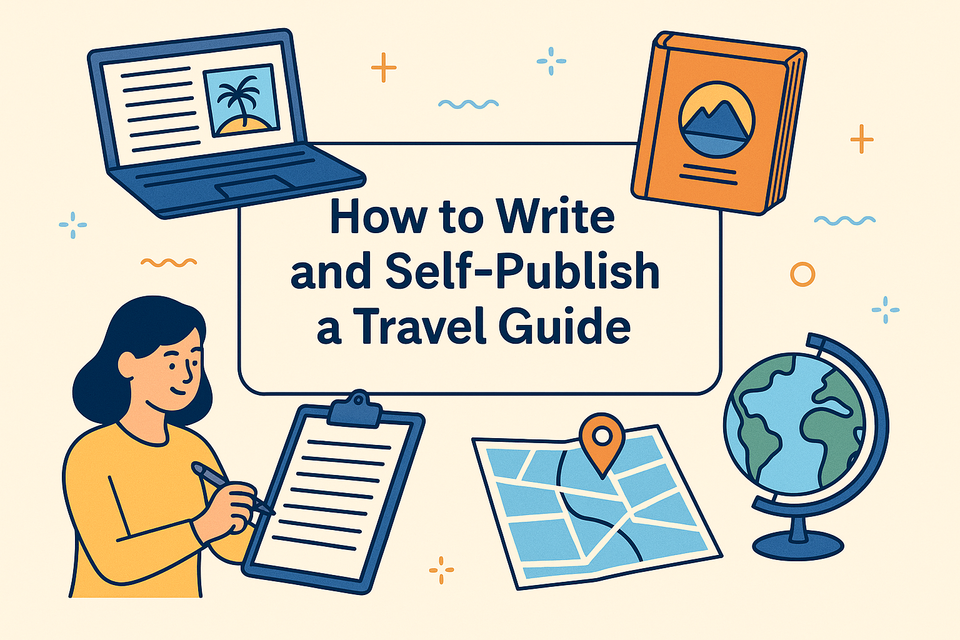How to Write a Travel Guide and Sell It Through Your Blog

Creating and selling a travel guide is one of the most effective ways to transform your blog into a consistent source of income. If you already write travel content, you’re halfway there. This guide will walk you through the exact steps to turn your knowledge into a product people are willing to pay for.
Step 1: Choose the Right Type of Travel Guide
Not all travel guides are created equal. Start by choosing a format that aligns with your expertise and your readers’ interests:
- Destination-specific (e.g., "A Local’s Guide to Lisbon")
- Thematic (e.g., "Europe for Solo Female Travelers")
- Budget-focused (e.g., "7 Days in Japan Under $500")
- Experience-based (e.g., "Cultural Immersion in Oaxaca")
Check what’s selling on Amazon or Gumroad and study what’s missing in your niche.
Step 2: Identify Your Unique Angle
Thousands of guides exist, so what’s your unique value? Think about:
- What do you know better than most?
- What do readers frequently ask in your comments or emails?
- What’s the personal perspective you bring?
This is your selling point.
Step 3: Research What Already Exists
Search Google, Amazon and Etsy for similar guides. Look at:
- Content structure
- Length and depth
- Price point
- User reviews (especially complaints)
Your job is to offer something better, clearer, or more specific.
Step 4: Outline the Content
Structure is everything. A basic travel guide outline might include:
- Introduction / Why this guide is different
- Essential travel tips (visas, transport, money, safety)
- Day-by-day itineraries
- Food and accommodation recommendations
- Insider tips / local customs
- Resources (apps, websites, maps)
Use your blog analytics to identify popular topics and make sure to include them.
Step 5: Write and Reuse Blog Content Wisely
You don’t have to start from scratch. Pull together:
- Your most helpful blog posts
- Comments and feedback from your readers
- Instagram captions with practical advice
Repurpose this into more polished, structured, and value-packed content.
Step 6: Add an Interactive Map
Including a custom map with all the locations mentioned in your guide greatly improves its value. It makes the guide more actionable and easier to follow for your readers.
Here are a few tools you can use:
- Google My Maps – Add custom pins, layers, and descriptions for free
- MakeMyMap – Easy-to-use map tool for creating custom itineraries
- Atlist – Create stylish interactive maps with categories and embed options
- MapHub – Collaborative and minimalist map tool
You can embed the map in your blog, link to it in your guide, or offer it as a bonus resource.
Step 7: Design and Format for Digital Sale
- Use free tools like Canva, Designrr, or Google Docs + PDF export
- Keep layout clean and scannable
- Add original photos, maps, and links
- Make it mobile-friendly
You can sell your guide in PDF format, or use platforms like Etsy, Gumroad, Payhip, or Shopify.
Step 8: Price It Right
Check what similar products charge. Typically:
- Short weekend guides: $5–9
- In-depth country guides: $15–25
Offer launch discounts to your mailing list and blog readers.
Step 9: Create a Landing Page
Build a simple sales page using:
- Clear headline
- What’s inside the guide
- 3–5 bullet points of benefits
- Screenshots or sample pages
- Testimonials (even from beta readers)
- Call-to-action button (Buy Now)
Use your blog to funnel traffic to this page.
Step 10: Promote via Blog, Email & Social
- Write related blog posts and link to your guide
- Offer a free sample chapter in exchange for emails
- Use Pinterest pins and Instagram Stories
- Create a dedicated "Start Here" page on your blog
Consistency is key — promote it regularly, not just once.
Bonus: Bundle & Upsell
- Sell itineraries as separate products
- Bundle city guides into a regional pack
- Offer coaching or custom planning as a premium option
Creating a travel guide might seem like a big task, but it’s manageable — especially when you repurpose content you already have. Most importantly, it’s a product that keeps working for you long after it’s published.
Start simple. Launch it. Learn. Then improve.
Your blog can be more than just stories — it can be a store.